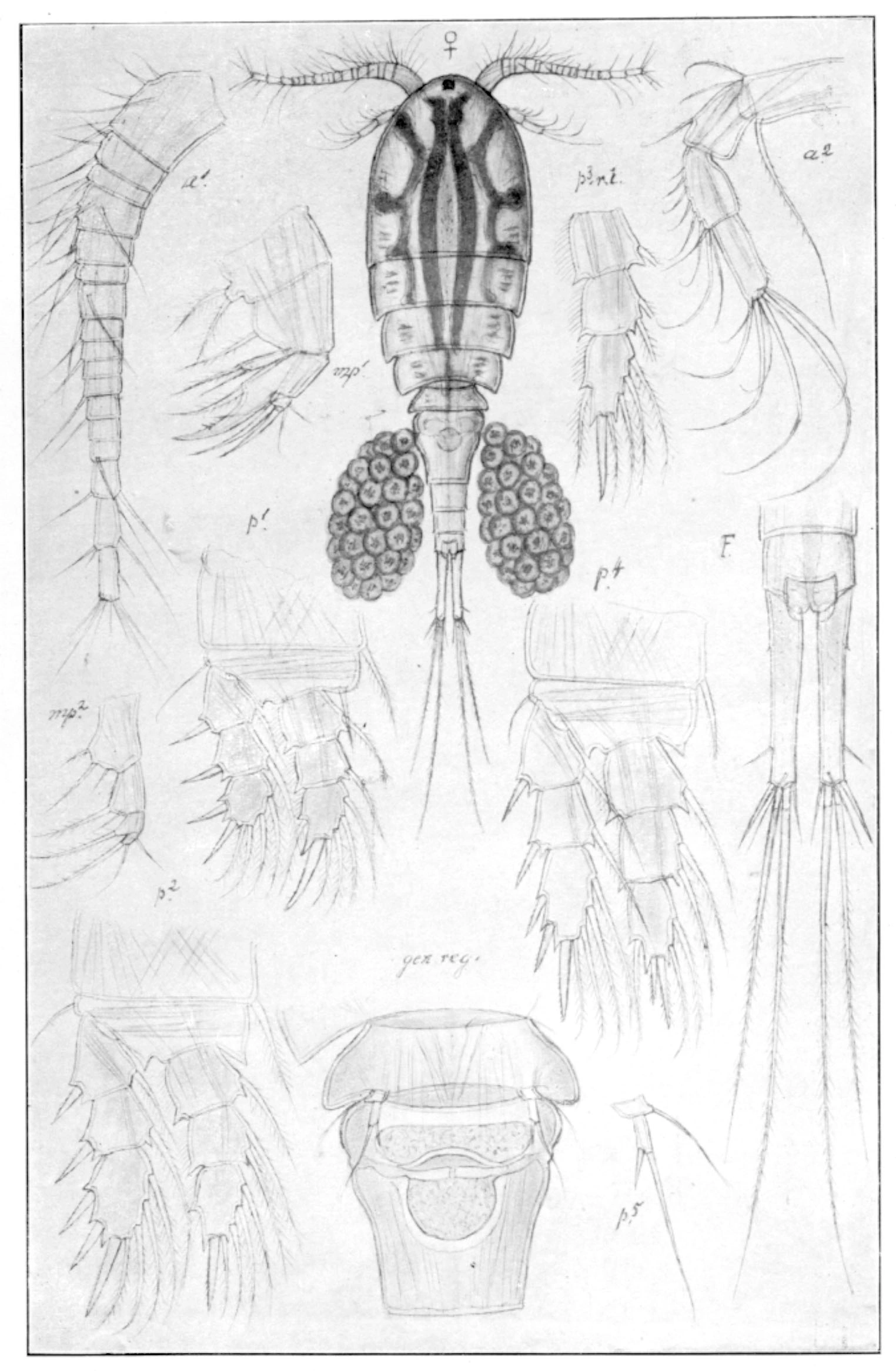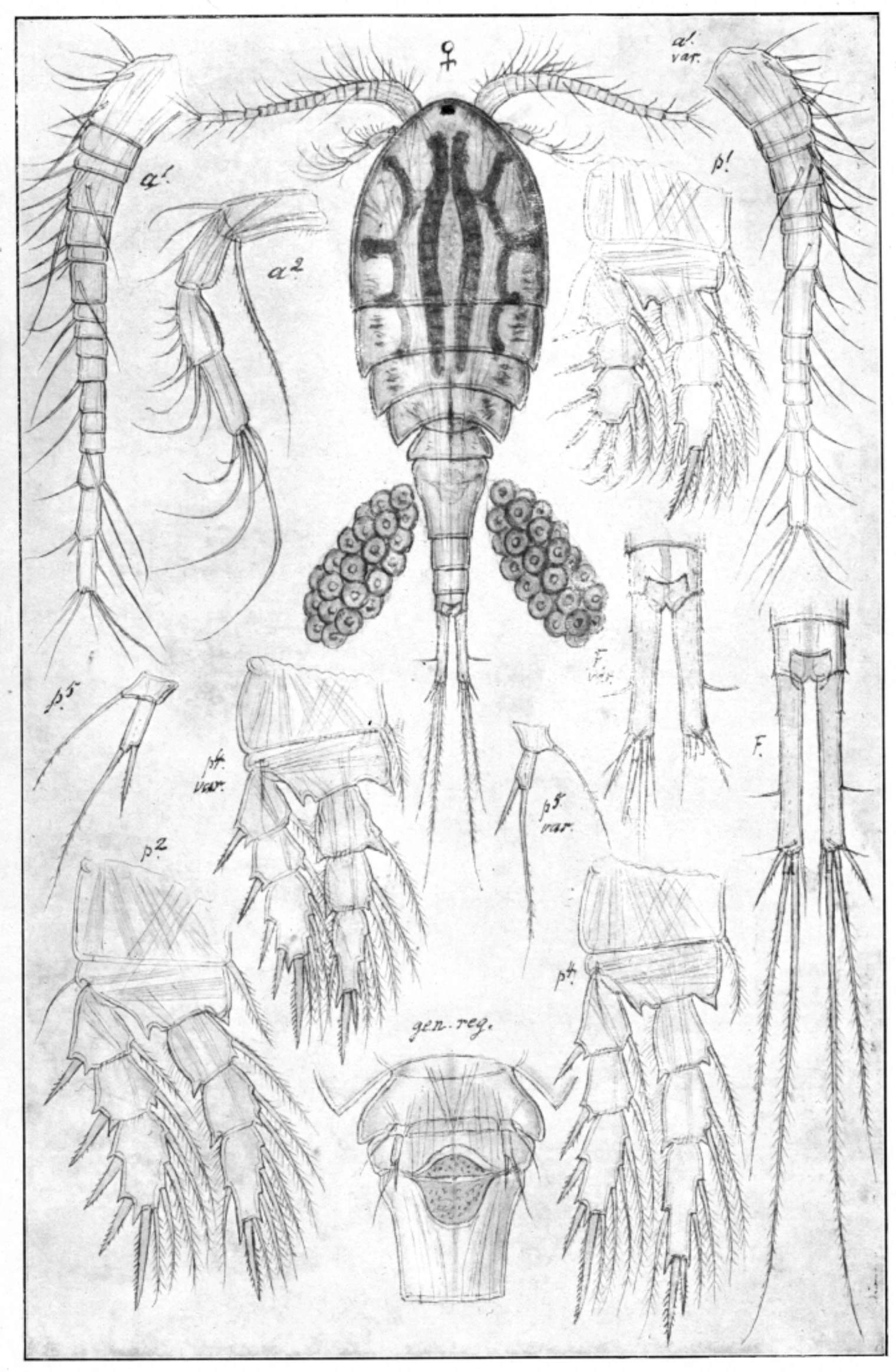Diacyclops bisetosus
Diacyclops bisetosus has a slender body form with a long tail. It is a rare species and common in shallow ponds and ditches characterized by high loads of respectively nitrogen and phosphorus.
Key characteristics
Diacyclops bisetosus (female)
Diacyclops bisetosus may resemble D. bicuspidatus in having a relatively long tail and a body form which is even more slender than this species. The last thorax segment (5.) is only slightly protruded laterally and the antennas have 17 joints. However, the outer edge seta is attached close to the end of the tail in C. bisetosus. This is a criterion which can be used to separate the two species. The body of C. bisetosus is whitish grey, with a more or less distinct reddish or brownish tinge.
Female: Length 0.9–1.4 mm
Male: Length 1.0 mm
Ecology and distribution
According to G.O. Sars this littoral species was by no means uncommon. He found C. bisetosus in many parts of the country, always in shallow ponds and ditches which are subjected to more or less complete excitation during the summer. Since Sars, there are a few records from ponds characterized by high loads of respectively nitrogen and phosphorus.
| Vitenskapelig navn | < 4,5 | 4,5 - 4,9 | 5,0 - 5,4 | 5,5 - 5,9 | 6,0 - 6,4 | 6,5 - 7,0 | 7,0 - 7,4 | > 7,5 |
|---|---|---|---|---|---|---|---|---|
| 0 | 0 | 0 | 0 | 0,6 | 0,3 | 0 | 0 |
| Vitenskapelig navn | < 1,0 | 1,0 - 1,4 | 1,5 - 1,9 | 2,0 - 2,9 | 3,0 - 3,9 | 4,0 - 4,9 | 5,0 - 6,9 | 7,0 - 9,9 | > 10,0 |
|---|---|---|---|---|---|---|---|---|---|
| 0 | 0 | 0 | 0 | 0 | 0 | 0 | 0 | 1,8 |
| Vitenskapelig navn | < 0,01 | 0,01 - 0,09 | 0,1 - 0,9 | 1,0 - 9,9 | 10,0 - 99 | 100 - 999 | > 1000 |
|---|---|---|---|---|---|---|---|
| 0 | 2,5 | 0 | 0 | 0 | 0 | 2,2 |
| Vitenskapelig navn | < 100 | 100-299 | 300-499 | 500-699 | 700-999 | >1000 |
|---|---|---|---|---|---|---|
| 0 | 0,7 | 0 | 0 | 0 | 0 |
Look alikes
Diacyclops bicuspidatus

